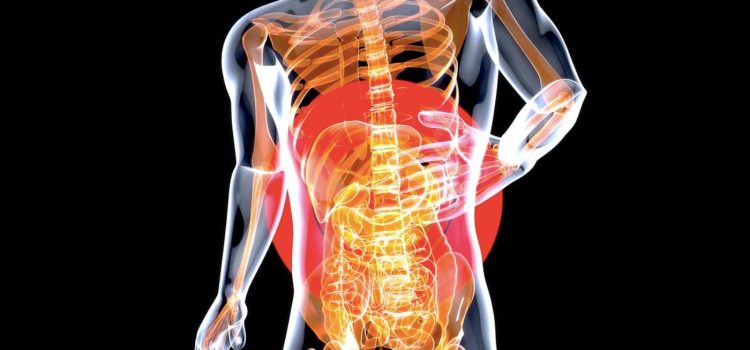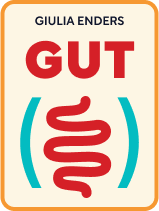

This article is an excerpt from the Shortform book guide to "Gut" by Giulia Enders. Shortform has the world's best summaries and analyses of books you should be reading.
Like this article? Sign up for a free trial here .
What is the gut? What function does the gut serve in the body?
Your gastrointestinal tract starts in the mouth and ends at the anus. The gut serves a number of important functions in the body, including breaking down food into its constituent nutrients, regulating the microbiome, and eliminating waste.
Here’s how your gut works and why it’s important to keep it healthy.
How the Gut Works in Humans’ Bodies
What is the purpose of the gut in the human body? The gut is an intricate system of organs, muscles, and bacteria. Its job is to break down the food that you eat into nutrients. Your body then uses these nutrients to store energy, build important structures, and keep you healthy.
The 3 Nutritional Building Blocks
Before exploring how the gut breaks down food, we first need to introduce the three nutritional building blocks: carbohydrates, fat, and amino acids (proteins). These building blocks are also known as macronutrients (macro- meaning “large”) because our bodies need large amounts of them to survive.
On a molecular level, Enders explains, different combinations of the three macronutrients make up all of the food that we eat. Your gut’s job is to break your food down into those tiny molecular components. Then it absorbs those molecules into the bloodstream and uses them to fuel your cells, store energy, and build important structures such as hormones, muscles, and DNA.
The Digestive System
The three nutritional building blocks we’ve just described play crucial roles in storing energy, powering cells, and building bodily structures. However, to receive these benefits, your digestive system must first break down food into molecules that you can absorb.
Enders explains that digesting food is a complex process that requires all of the organs in the gut to work together and perform their precise functions. Here we’ll describe this process from start to finish, detailing the role of each organ.
The Mouth
We tend to think the human body’s gut begins in the abdomen. However, Enders maintains that the mouth is actually the first stop in the digestion process. When we eat food, the mouth begins to break it down by releasing saliva and chewing. The mouth also protects us from unwelcome bacteria that we encounter in everyday life. These functions take place in two places: the salivary glands and the tonsils.
The Esophagus
When we swallow food, it enters our esophagus. The esophagus transports the food from the mouth to the stomach. Enders explains that the esophagus is ringed by muscles that propel the food downward by constricting and then relaxing. This results in a wave-like motion called “propulsive peristalsis.” This motion isn’t dependent on gravity. In other words, food makes it to your stomach even when you’re upside down!
The Stomach
At the beginning of the gut, your mouth starts to break down food by chewing it. The stomach’s job in the gut of the human body is to break down the food even more, making it easier to digest.
There are two parts to this job. First, the stomach produces acid. According to Enders, it begins to do so before the food is even in the esophagus. Stomach acid helps heat the chewed-up food and break its molecular bonds.
When the stomach receives food from the esophagus, it begins to alternately contract and relax. This creates what Enders describes as a swinging motion, which churns the food together with the stomach acid, further breaking it down. According to Enders, this churning process usually takes around 2 hours. It takes less time for liquids and simple carbs, but longer for proteins and fats.
The Small Intestine
When the stomach is done with your food, it no longer resembles what you put in your mouth. Instead, it’s a pulp of nutritious carbohydrates, fats, and proteins called chyme.
The small intestine’s job in the gut is to absorb the food particles found in chyme into the bloodstream. From there, as we’ve already noted, the particles travel throughout the body, providing fuel for our cells and building important structures.
There are three important parts to the small intestine’s job: breakdown, absorption, and cleanup.
The Large Intestine and Appendix
Enders notes that the small intestine is remarkably efficient at absorbing food particles. However, it can’t process everything. This is where the large intestine comes in: Helped by a huge population of bacteria, its job is to digest nutrients that the small intestine can’t absorb.
Attached to the large intestine is the appendix. Despite its reputation as a useless organ, Enders argues that the appendix helps digestion by maintaining the gut’s population of healthy bacteria in the human body.
The Final Part of the Gut: Pooping
Even after the large intestine’s job is done, there are some substances that your body can’t or won’t absorb. These substances appear in your poop. We generally think of pooping as a simple, mundane act. However, Enders maintains that it’s a fascinating and complex process. Here, we’ll provide a brief explanation of this process.
Enders explains that pooping works through a negotiation between our internal and external sphincters: muscles that prevent the contents of our guts from leaking. We consciously control the external sphincter, but not the internal one. In other words, the internal sphincter can open and close without our brains telling it to.
When we need to poop (or fart), the internal sphincter lets out a little bit of liquid (or gas). The external sphincter then sends a message to the brain, telling it that we’re ready to release our bowels. The brain then decides whether to open the external sphincter and let out the poop (or gas) or keep the sphincter closed until later.

———End of Preview———
Like what you just read? Read the rest of the world's best book summary and analysis of Giulia Enders's "Gut" at Shortform .
Here's what you'll find in our full Gut summary :
- How your digestive system works and why it’s important to keep it healthy
- How tiny organisms in your intestines influence your immune system (and possibly your mood)
- What your appendix actually does






